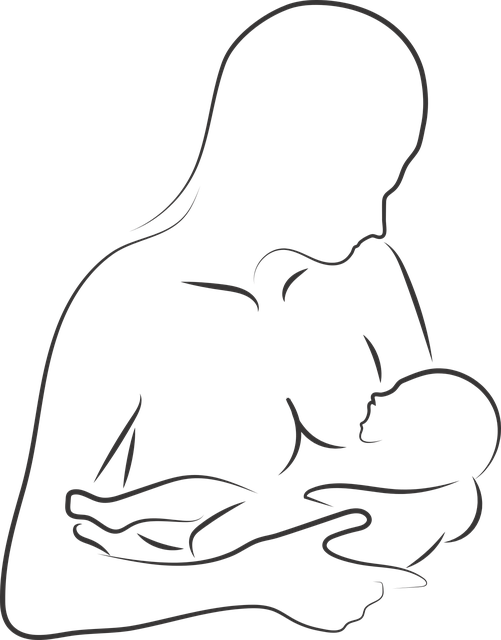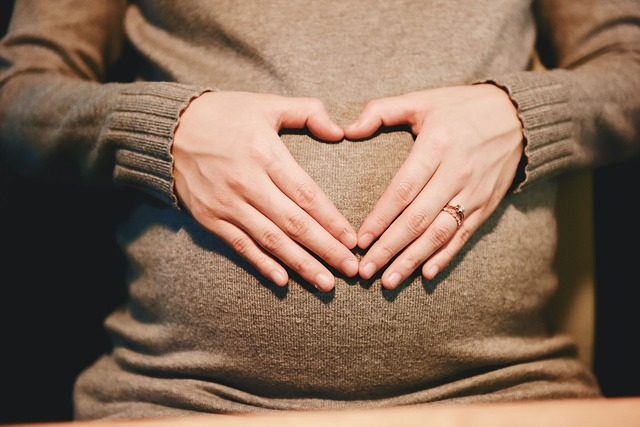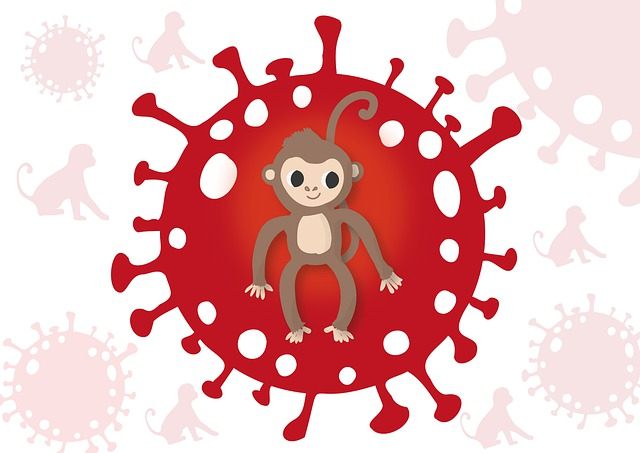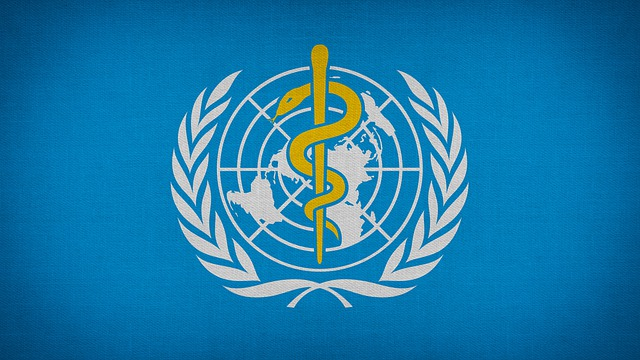Monkeypox Effects On Breastfeeding, Maternity, & More

You and your baby are highly vulnerable to getting infected with monkeypox and breastfeeding may not be advisable.
As of July 2022 there is a current outbreak of Monkeypox with more than 6000 confirmed cases in the current outbreak with more confirmed cases expected in the near future.
Although certain African regions have historically been the hotspot that is changing fast as infections are reported worldwide.
Monkeypox causes flu-like symptoms like fever, swollen lymph nodes, chills, and a rash that takes weeks to heal.
As of today Monkeypox remains incurable, but can fade away on its own, as some public health officials suggest. Monkeypox symptoms last between two and four weeks.
This article has everything you need to know about the monkeypox virus as a new or expecting mom.
Monkeypox Effects On Breastfeeding

You and your baby are highly vulnerable to getting infected with monkeypox during the early days after birth, and breastfeeding may not be advisable.
Breastfeeding Effects On Mother & Baby
It's still unclear exactly how monkeypox spreads from mother to baby and vice versa.
However, some methods may include direct skin contact.
Since breastfeeding centers around direct skin contact, breastfeeding with an active monkeypox infection could create a risk of infecting your baby.
Not much is confirmed yet on the severe effects of monkeypox on pregnancy but it is known that smallpox, a related virus, raises the risk of maternal illness and mortality, including fetal death, premature birth, and spontaneous miscarriage.
How New Mothers Can Ensure Safe Breastfeeding
The recommended approach to neonatal care would prevent the majority of mothers with active monkeypox infections from breastfeeding their infants.
In high-income countries, doing this makes sense to reduce the risk of neonatal monkeypox infection. The advantages of breastfeeding, however, may outweigh the potential increased risk of infant monkeypox infection in areas with reduced access to alternatives such as baby formula.
Until the period of isolation has passed, moms can express and discard milk to support nursing after infection. If you are expecting to be pregnant or have recently given birth you should also consider being immunized as vaccines become widely available.
Monkeypox Effects During Maternity
Constant studies are being conducted to find effective treatments, but as of today we are early on in this process.
Is Monkeypox Relevant To Maternity?
Top medical institutions suggest that pregnant women are at the highest risk of being infected by the monkeypox disease. Therefore, monkeypox disease is highly relevant to maternity and after giving birth to the baby. Both the baby and mother remain at an alarming risk of a severe level of infection.
Transmission from mother to baby

The WHO (World Health Organization) suggests that the transmission from the pregnant woman to the fetus occurs through the placenta. This might result in congenital monkeypox. Otherwise, it might transmit through intimate contact during labor and after delivery, resulting in a human monkeypox infection.
Potential unknown risks
Although the risk to the fetus is not yet fully understood, vertical transmission and fetal death are both plausible scenarios. Therefore, pregnant women should proceed cautiously in pregnancies with proven monkeypox infection until additional information is known. Since the majority of instances of maternal monkeypox are mild and self-limiting, you should still be able to carry your baby to term - but please consult with your pediatrician or other qualified healthcare professionals.
Monkeypox Infection, Diagnosis, & Cure
Sexual interactions are the main factor linking transmission in afflicted nations in 2022. There is a significant chance that other instances, maybe in different population groupings, will be discovered without traditionally established transmission lines. Given how many nations in various WHO areas have reported instances of monkeypox, additional countries may report cases, and the virus will likely continue to spread.
General transmission risks & prevention
Humans can also get infected from infected animals by bites or direct contact with their blood, meat, body fluids, or cutaneous or mucosal sores. It is believed Monkeypox spreads via sexual contact, but there aren't enough pieces of evidence to officially declare monkeypox an STD.
You can protect yourself by following these steps:
- When near suspected monkeypox cases or confirmed monkeypox carriers: if available, you should wear a mask and other personal protective equipment (PPE) as you would to protect from other diseases like COVID-19.
- Everyone in your household must also follow procedures for protecting themselves from Monkeypox generally.
- Infected mothers and the general public must regularly wash their hands with soap and fresh water.
- If you are infected you may be moved to a specialized facility for additional care in various healthcare systems following a successful and confirmed diagnosis. For instance, this would be a High-Consequence Infectious Diseases Unit in the U.K.
- For prevention, be extra careful, self-isolate as much as possible, and have total awareness.
- If you are unable to prevent potential exposure to Monkeypox, bathing after going out in public for a long time can further help eliminate the potential monkeypox virus on the body.
- Monkeypox virus can spread through air and water. Avoid using public drinking springs / water fountains.
- Keep a bottle of hand sanitizer with you. Always!
- Avoid travel to monkeypox hotspots where confirmed monkeypox patients are reported.
- Public transportation may also be risky, so avoid using it as much as possible.
Remember: no matter how strong is your immune system, it's always best to take precautionary measures when pregnant or breastfeeding.
Symptoms of Monkeypox virus
The incubation phase lasts 6 to 13 days but can be up to 21 days.
The early phase symptoms are:
- fever
- sweats
- headaches
- myalgia
- exhaustion
The second phase (skin-eruption phase) starts 1-3 days following the onset of fever and the symptoms progress as follows:
- The face and extremities are affected by the rash
- Crusts form on the skin (in a severe monkeypox infection)
- Lymph node swelling more severe than smallpox or chickenpox can happen as well
Please be extra careful if you are immunocompromised as you can be more susceptible to severe illness and have a higher risk of death.
Diagnosing Monkeypox
A viral swab is subjected to polymerase chain reaction (PCR) testing to diagnose monkeypox.
A throat swab should be taken from high-risk contacts of a known case with systemic symptoms but no rash or lesions for sampling. If severe rash or lesions are present, they should be given priority for testing.
Monkeypox Treatments
There is currently no specific approved therapy to treat monkeypox. However, antiviral medications may be effective. The U.S. Food and Drug Administration (FDA) has granted Tecovirimat approval to treat human smallpox illness in adults and children weighing at least 3 kg.
Due to a lack of information regarding its usage in pregnant women and insufficient data from animal studies regarding its potential for reproductive harm, tecovirimat has not been approved for use during pregnancy. The current Centers for Disease Control and Prevention's (CDC) advice for treating monkeypox states that pregnant or breastfeeding women may be at increased risk of severe disease. Thus, they must be prioritized for treatment after consulting with the CDC.
Monkeypox Vaccine
Through many observational studies, it was shown that the effectiveness of the smallpox vaccine in preventing monkeypox was roughly 85%. There may be a milder sickness as a result of previous smallpox vaccination. An upper arm scar is frequently present as proof of last smallpox immunization. The first-generation (original) smallpox vaccines are currently unavailable to the general population.
Some laboratory or healthcare employees may have had a more current smallpox vaccination to safeguard them from orthopoxvirus exposure at work. In 2019, a newer vaccine based on a modified strain was authorized to prevent monkeypox. This two-dose vaccine is still only partially available.
Monkeypox Discovery & First-ever Cases
First identified in monkeys in 1958, monkeypox's first case in a human was recognized in the year 1970 in a small region located in the Democratic Republic of Congo.
In 1977, Somalia saw the final instance of smallpox that happened naturally. The illness had been wiped out globally by vaccination and in the late 1970s, the smallpox vaccination was discontinued.
As a result, the smallpox vaccine's considerable cross-protection against monkeypox has been lost, and the monkeypox virus has become a more serious human pathogen.
Eight times, a significant monkeypox outbreak began in Nigeria in 2017. It's still prevalent and has become global, with sick individuals spreading the virus to several nations, including the U.K. and the USA.
Monkeypox Vs. Smallpox

Monkeypox shares several clinical characteristics with smallpox, a closely related but now-extinct orthopoxvirus illness. Since roughly 30% of individuals perished from smallpox, it was more frequently lethal and easier to spread. Smallpox was reportedly eradicated worldwide in 1980 following a global vaccination and containment program that saw the last naturally occurring case in 1977.
Since all nations stopped administering vaccinia-based vaccinations for routine smallpox vaccination, it has been at least 40 years since the last vaccination. Unvaccinated populations are now more vulnerable to monkeypox virus infection because vaccination protects against monkeypox in the west and central Africa.
Smallpox is no longer a naturally occurring disease. But the global health community is nonetheless on high alert in case it should resurface due to natural processes, laboratory mishaps, or intentional release. Newer vaccines, diagnostics, and antiviral medicines are being developed to ensure worldwide preparation for the return of smallpox. These could now help prevent and treat monkeypox.
Monkeypox Outbreak In The United States & Other Countries

As of 15 June 2022, a total of 2103 laboratory-confirmed cases and one probable case, including one fatality, had been reported to WHO for the American, African, European, Eastern Mediterranean, and Western Pacific regions.
The United States has had 201 confirmed cases of monkeypox since the global pandemic started in May. In contrast, there are almost 800 cases in the U.K. and more than 500 in Germany and Spain. Health officials don't know how many of the confirmed cases were contracted. People that are affected haven't traveled or interacted with other infected people.
That indicates that the virus is subtly spreading in some localities and towns.
Conclusion: Is Monkeypox A Pandemic In The Year 2022?
An outbreak of monkeypox is defined as one confirmed case within a nation. The sudden emergence of monkeypox in several locales was witnessed despite an initial lack of epidemiological connections to regions that had previously reported monkeypox.
This indicates that there may have been long-term undetected transmission.
Monkeypox Infection Prevention By WHO

This is the first time several monkeypox cases and clusters have been recorded concurrently in numerous countries in widely separated WHO geographical zones.
Thus, the WHO currently rates the risk of the disease spreading at the global level as moderate.
Scientific research has been active since 2022 to evaluate the viability and suitability of vaccination.
A successful research outcome is expected to control and prevent the disease from spreading.